This article is brought to you by FBS.

The first half of 2025 was marked by growth — Bitcoin confidently led among crypto assets, reaching new highs and confirming its status as “digital gold.” This was supported by global macroeconomic factors: lower inflation, a pause in rate hikes, and a weakening dollar, which made risky assets attractive again.
At the same time, altcoins, including ETH, SOL, XRP, and others, showed much more modest dynamics. This sparked a wave of discussions about whether there would be an altseason in 2025, and whether Bitcoin’s growth was the final phase of the current bull market.
In this article, we will summarize the year’s first half, compare the dynamics of top assets, and analyze key scenarios for the second half of 2025: from growth to a possible reversal.
Bitcoin — The Undisputed Leader of the First Half of 2025
The first half of 2025 began with a noticeable correction for Bitcoin. Weakened buying activity, profit-taking, and a general decline in interest in risky assets caused a short-term decline. However, the situation changed in the spring. Due to the stabilization of the macroeconomic situation and the weakening of the dollar, a confident reversal began.
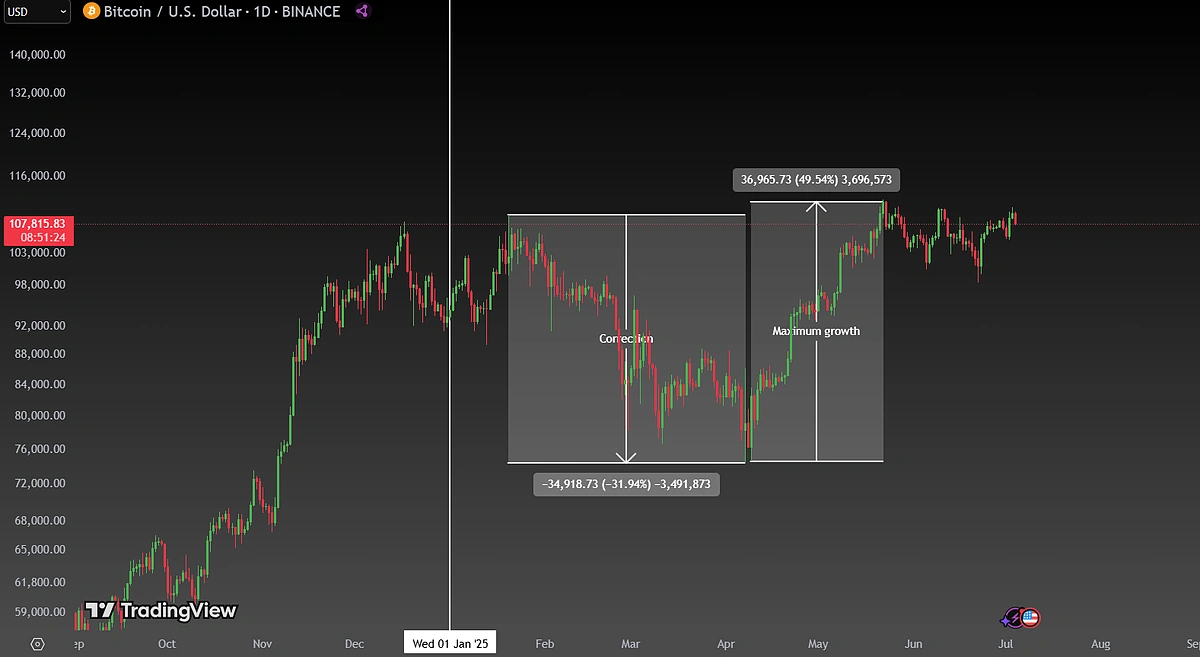
BTC dynamics since the beginning of the year
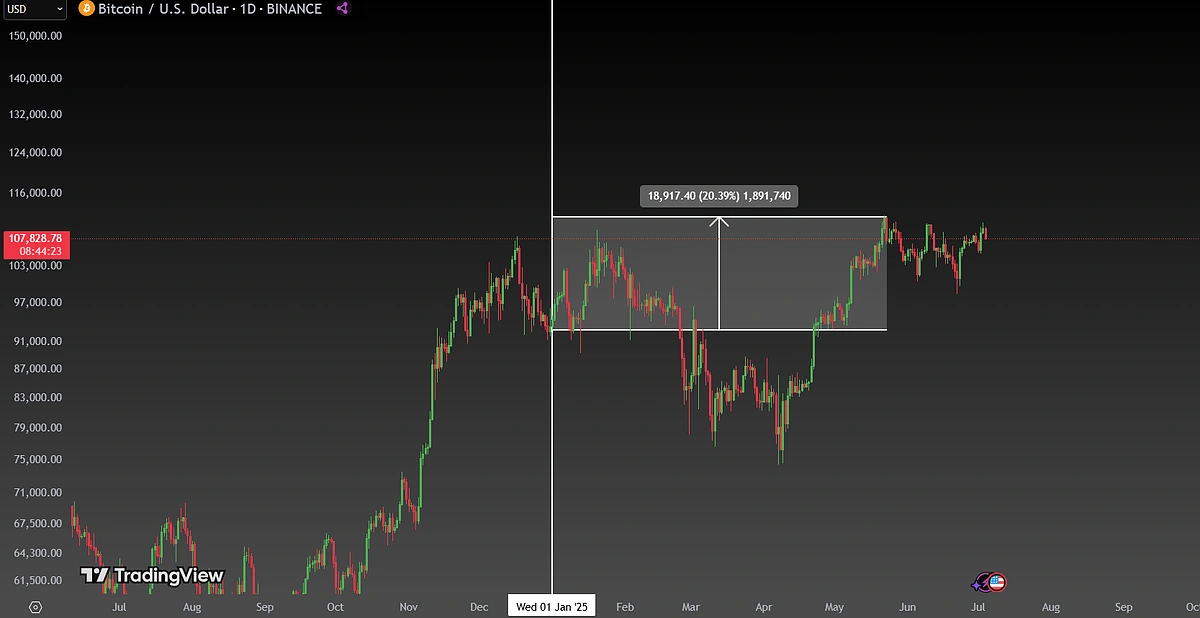
Maximum growth of BTC since the beginning of the year
Bitcoin quickly regained its position, once again becoming the main driver of the crypto market. While many altcoins remained under pressure, BTC showed steady growth, strengthening its dominance and reinforcing the confidence of long-term investors.
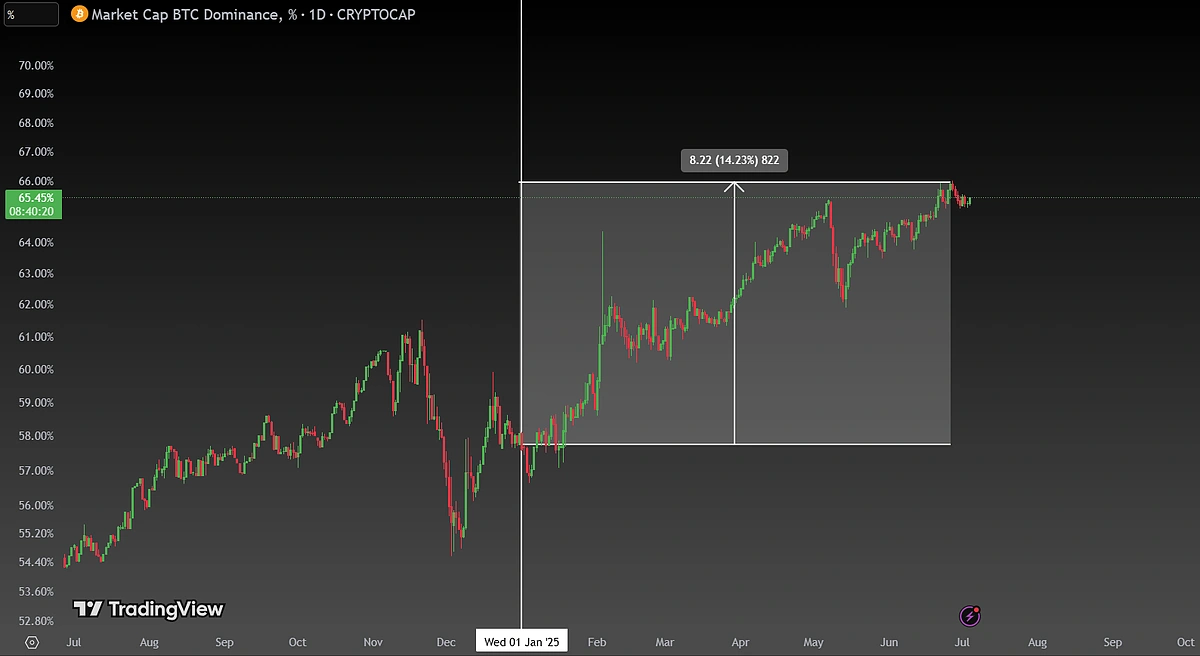
Growth of BTC.D
The correction at the beginning of the year was caused by larger macroeconomic conditions, including President Trump’s new tariffs, which prompted a broad turn away from riskier assets like cryptocurrencies in favor of traditional safe havens. Bitcoin reached a 2025 low of around $76.3 K, but enjoyed a strong rebound in the second quarter of 2025, which saw Bitcoin reach a new all time high .Bitcoin has once again proven its resilience and leading role in the ecosystem. The question is how long its dominance will last — and whether this phase will become a protracted end to the bull market.
Altcoins — A Prolonged Wait
Against the backdrop of Bitcoin’s recovery in the first half of 2025, altcoins performed significantly weaker. Many investors expected a repeat of the classic “alt season,” when, following BTC’s momentum, capital smoothly flows into riskier assets. However, in practice, altcoins showed sluggish dynamics and often lost ground relative to BTC. Some altcoins have still been unable to regain their positions from the beginning of the year, let alone their past historical highs.
Reasons for the Weakness of Altcoins:
-
Growth of BTC dominance: most liquidity went to Bitcoin, especially from institutional investors.
-
Low level of speculative interest: traders remained cautious and were in no hurry to resort to such risky assets.
-
Lack of potent fundamental triggers: unlike previous cycles, no significant updates or events could initiate large-scale pumps.
Who Is Holding Up Best?
Some altcoins, such as XRP, have shown relative stability thanks to strong communities, partnerships, and media support. However, these assets pale in comparison to Bitcoin regarding recovery rates and overall trend structure.
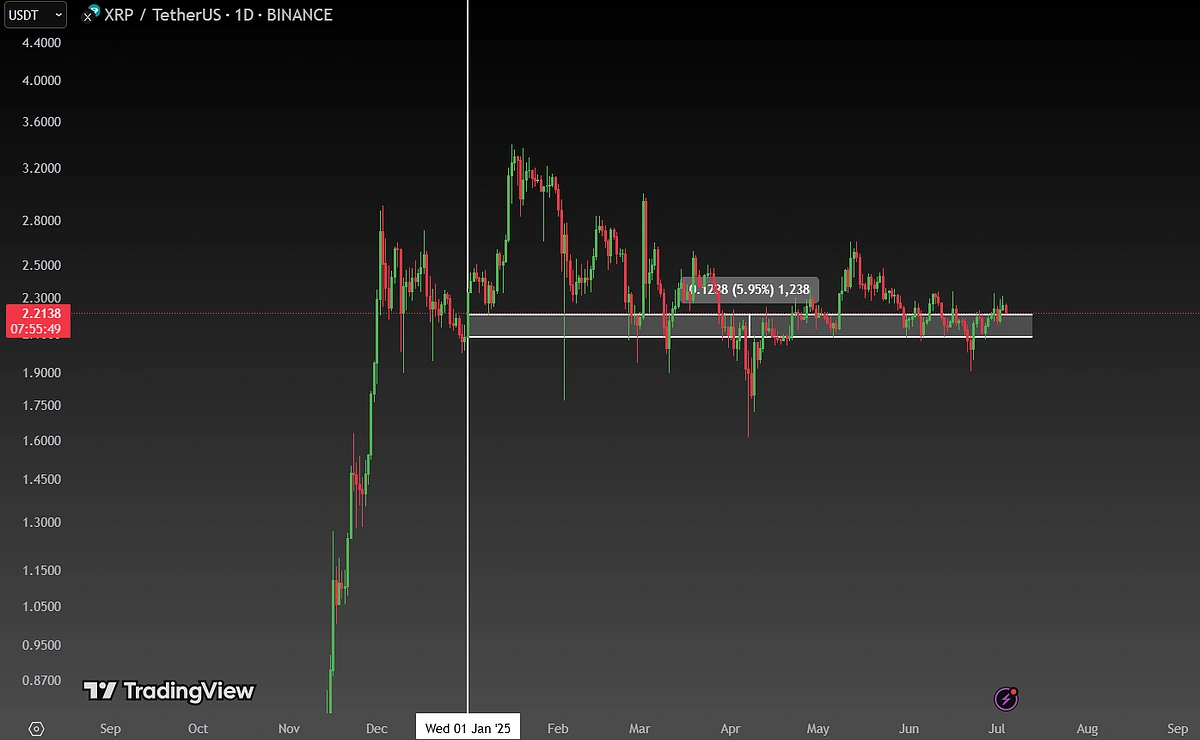
XRP dynamics since the beginning of the year
As can be seen, although XRP showed volatility, it generally maintained its performance within the same range.
Some assets, such as ETH and SOL, have provided traders and investors with short-term opportunities for profit and speculation. However, almost all these assets have not even recovered their year-to-date performance.
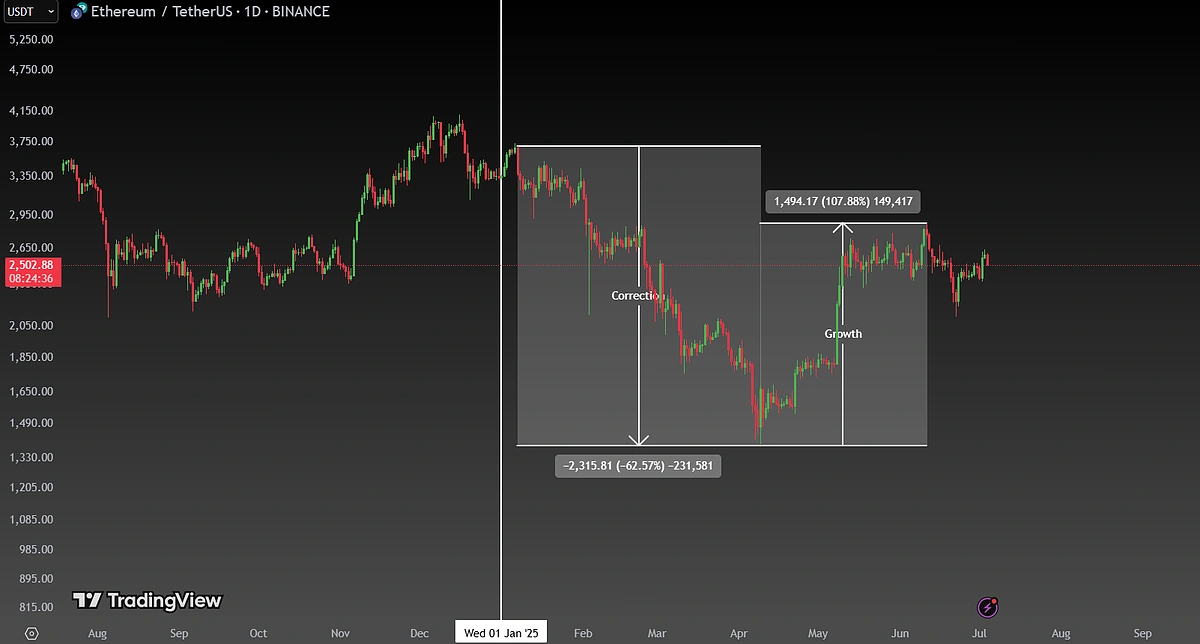
ETH dynamics since the beginning of the year
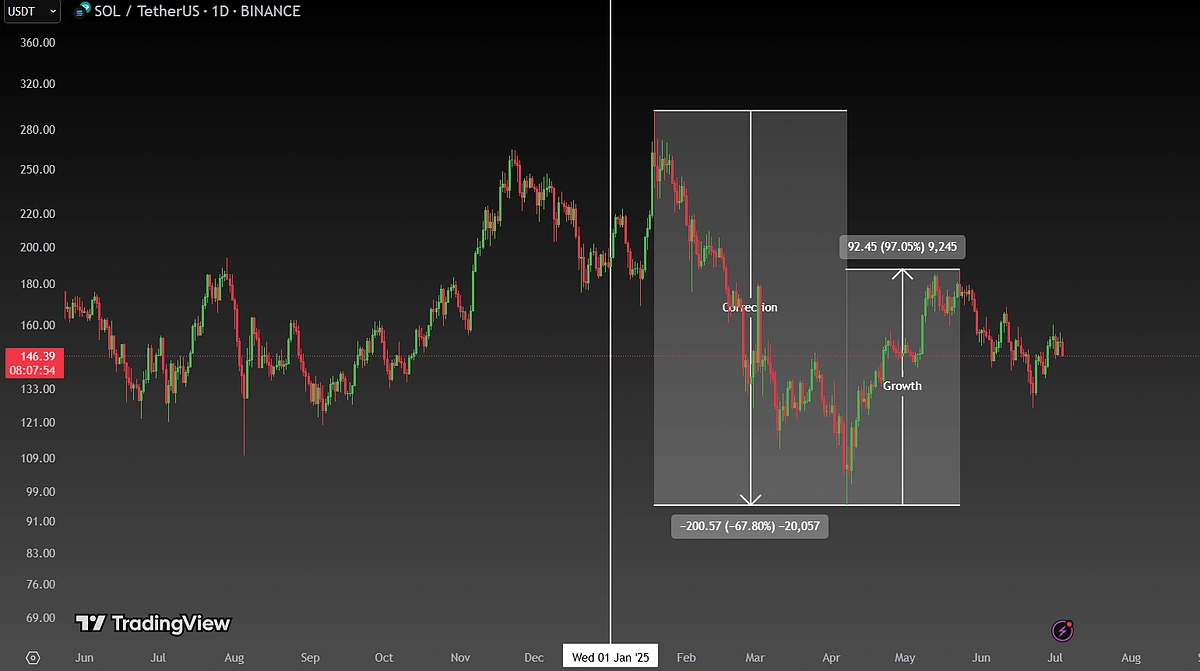
SOL dynamics since the beginning of the year
Although altcoins traditionally “turn on” with a delay, the prolonged weakness against the backdrop of Bitcoin’s growth raises the question: Will there be a full-fledged altseason within this cycle? Or is the current growth of BTC already close to its peak, and alts won’t have enough time to reverse?
Macroeconomic Situation
The macroeconomic backdrop remains a key factor determining the mood of the cryptocurrency market in the second half of 2025. While investors’ attention is focused on Fed policy, the dynamics of the dollar index, and stock market movements, these three forces could set the tone for the cryptocurrency trend — both upward and downward.
DXY
Historically, there has been a pronounced inverse correlation between the dollar index (DXY) and Bitcoin: when the dollar strengthens, interest in alternative assets declines, and vice versa. In the second half of the year, attention will be focused on the behavior of the DXY. If it starts to rise amid expectations of aggressive Fed policy or increased global tensions, this could pressure the crypto market.
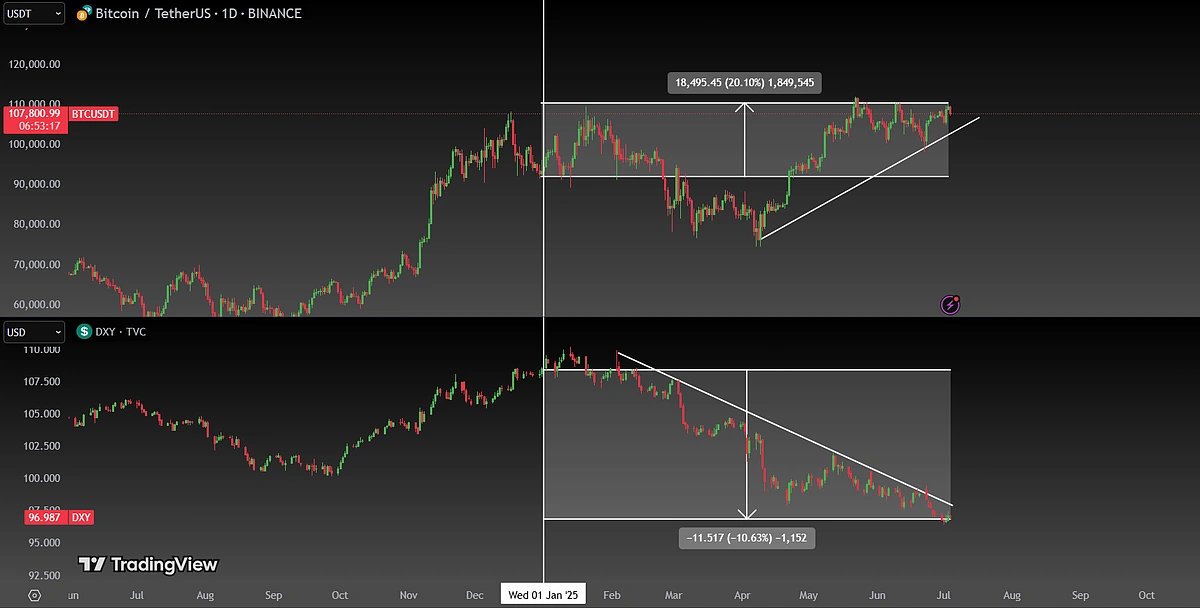
A clear example of the inverse correlation between BTC and DXY
Fed
The market is still living on expectations of a reversal in monetary policy. If the Fed starts to cut rates, this usually supports demand for risky assets, including cryptocurrencies. However, if the pause drags on or the rhetoric becomes hawkish again, the market may react with a decline.
Stock Market
The crypto market is still closely linked to the behavior of major stock indices, although each market is subject to their own specific catalysts and headwinds. Growth in the S&P 500 or NASDAQ is usually accompanied by an influx of liquidity into crypto. However, weakness in the stock market or capital outflows from the technology sector could weaken the momentum of cryptocurrency.
In the second half of the year, macro factors can either support or trigger a reversal for the crypto market. The DXY, Fed decisions, and stock index behavior will determine whether the bullish trend will continue, or give way to a distribution phase. Crypto traders should look not only at the BTC chart but also at the macro picture.
What Can You Expect in the Second Half of the Year? Possible Scenarios and Key Factors
After an ambiguous first half of the year, the market is entering a period of turbulence. On the horizon are both opportunities for a final upward momentum and potential threats of a reversal. The second half of 2025 will be a battle between belief in continuing the bullish cycle and signs of exhaustion.
The market is currently consolidating after the first wave of growth. There are only two possible scenarios: growth or decline.
Continued Growth
If the macro environment is favorable, ETFs will continue to experience net inflows, and retail demand will strengthen; the market may once again attempt to reach new heights. On the growth side, there is a possible capital flow into altcoins and a seasonal upturn in the fall.
From a technical point of view, the TOTAL chart indicates a possible continuation of the inflow of capital into cryptocurrencies. At the same time, the BTCUSDT chart confirms the possibility of growth with its technical picture.
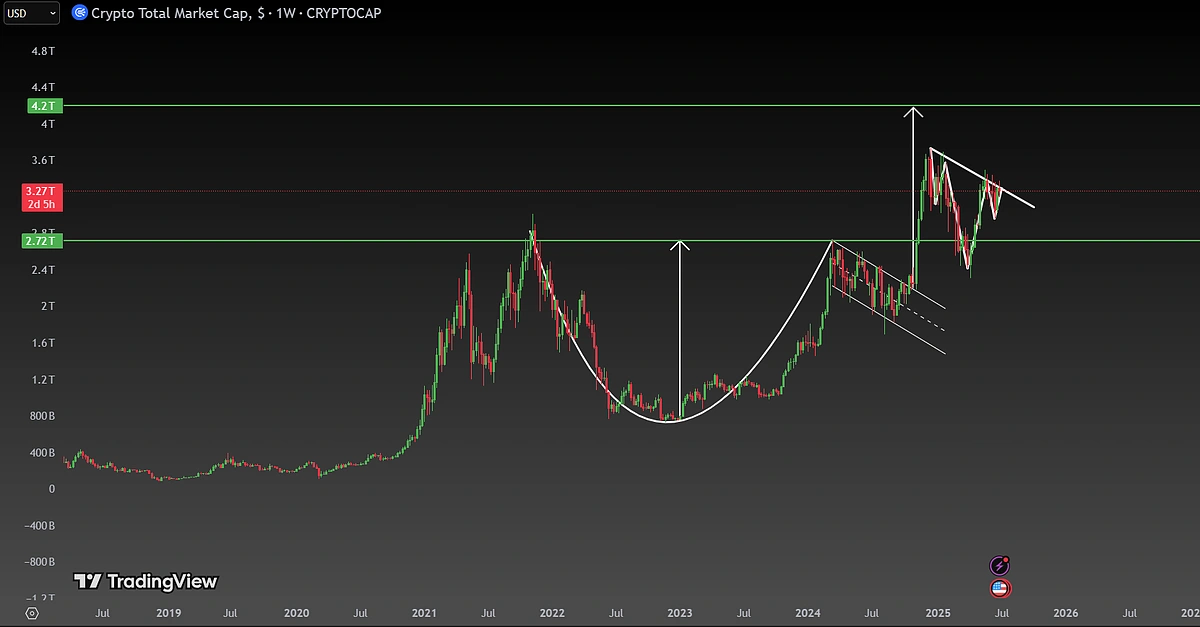
TOTAL Chart
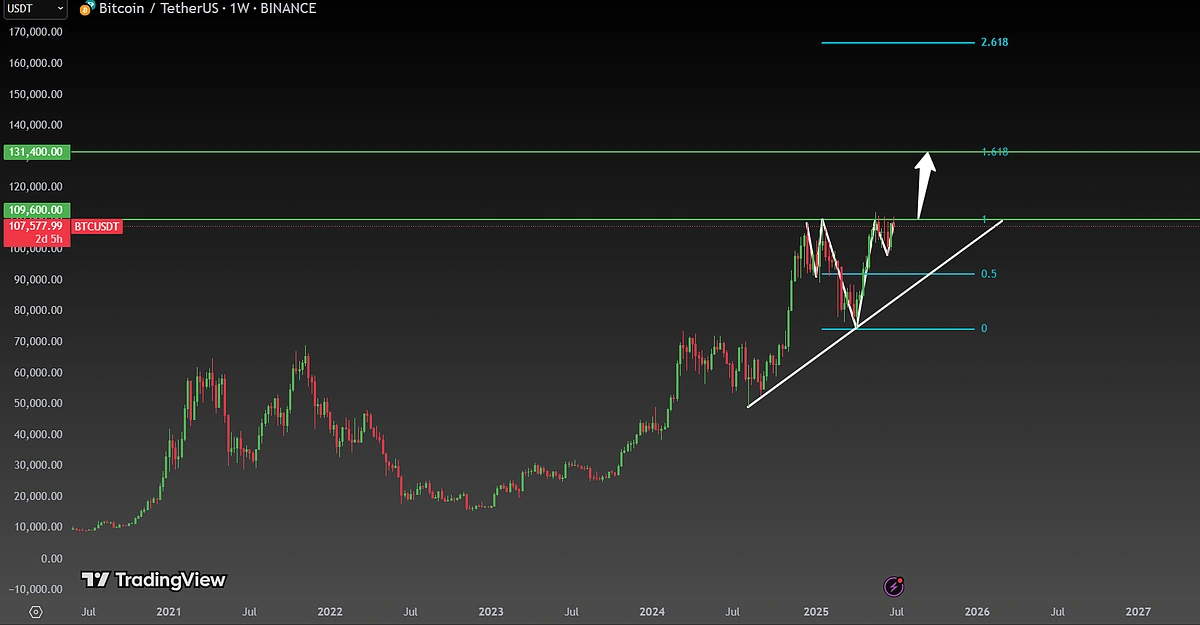
BTCUSDT analysis: potential growth targets
Correction:
If macroeconomic conditions deteriorate, we will probably witness outflows from ETFs, and as the DXY rises, the market may begin to decline, forming a bearish structure before the end of the year. There is also the potential for the start of a bearish cycle.
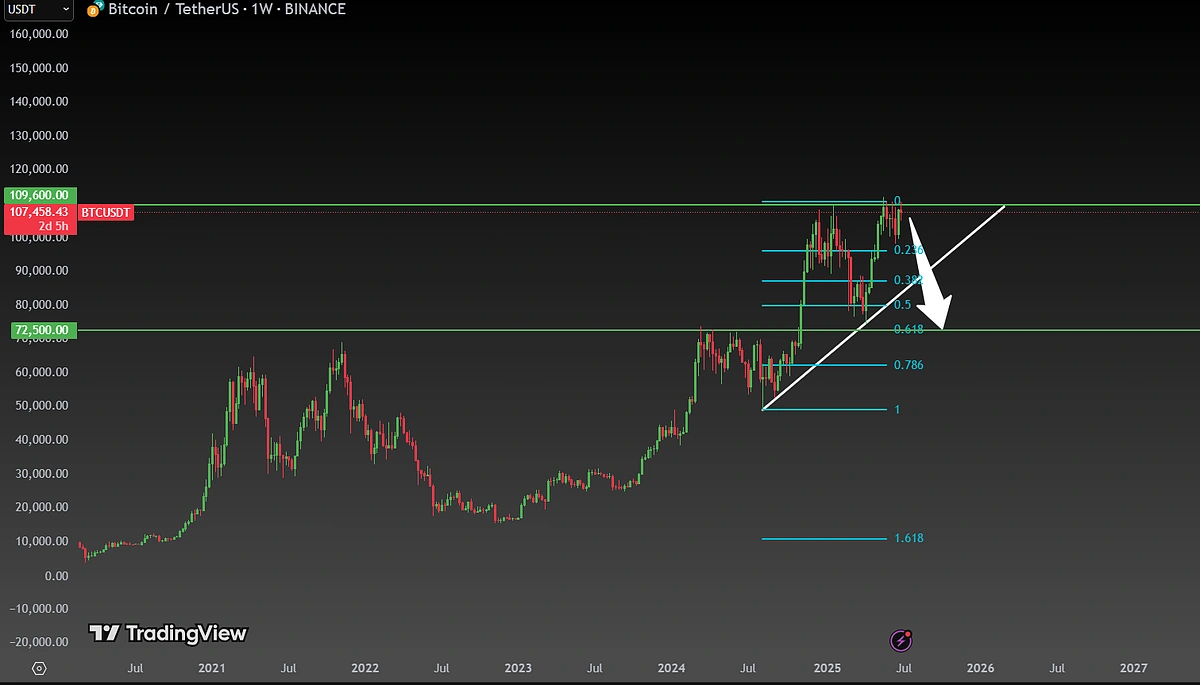
BTCUSDT analysis: potential targets for decline
When Will the Bull Run End? Historical Parallels and Key Signs of a Reversal
One of the most discussed questions in the crypto market today is whether we are approaching the final phase of the current bull cycle. Investors and traders carefully look for signs of a reversal, focusing on technical signals and historical patterns.
If we analyze previous crypto cycles using technical indicators, we can find patterns that allow us to roughly predict the end of the current bull market.
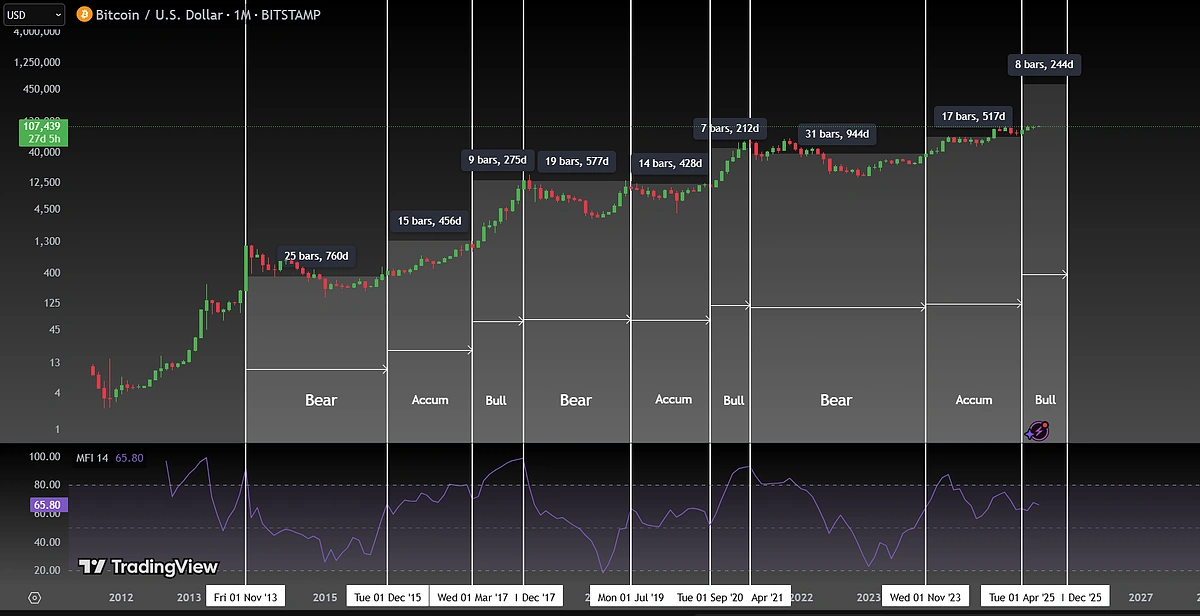
Analyzing the time intervals between Bitcoin halvings and market peaks provides additional confirmation. In all previous cycles, the price peak was reached approximately 500+ days after halving. Considering that the last halving occurred in the spring of 2024, a similar time lag again points to Q4 2025–Q1 2026 as the most likely period for the end of the current bull run.
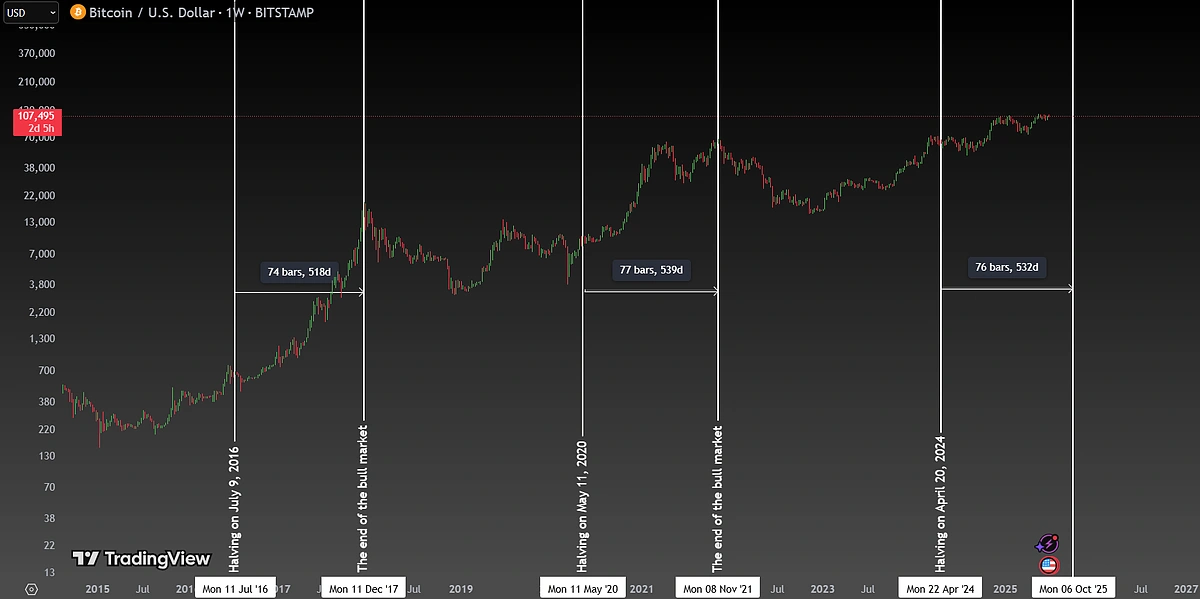
Analysis of halving cycles
The first half of 2025 set the tone for the entire current cycle—Bitcoin’s growth, the weakness of altcoins, and attention to macroeconomics formed a fragile balance. But the most important developments are likely still ahead. Looking ahead, market observers will be watching for signs of either a continuation of the bullish trend—which could potentially involve a final growth phase and increased activity in altcoins and an altseason—or a market reversal characterized by a distribution phase. The direction taken in the coming months will be critical in defining the next stage of the market cycle.
This article is by FBS analysts and is not intended to serve as investment or financial advice. Always do your own research before investing in any cryptocurrency.
